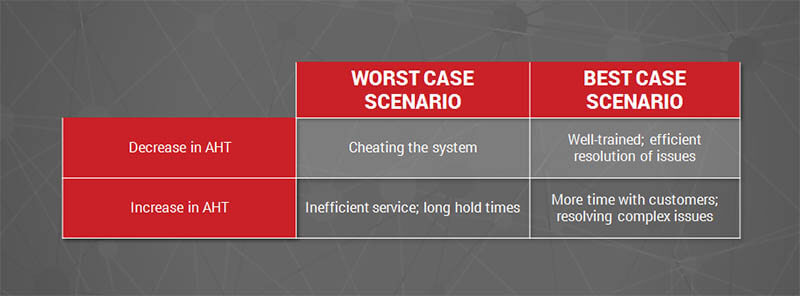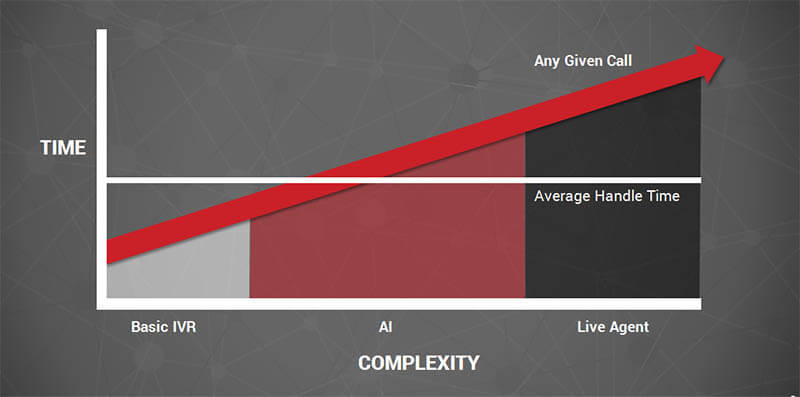Increasing Average Handle Time Is Better for Business
For many call center managers, average handle time (AHT) is a key reportable statistic that helps to measure the effectiveness of the call center agents they supervise. Managers and agents alike set goals to decrease their AHT, which implies more prompt and efficient service for the customer. However, using AHT as a primary way of measuring call center performance comes with its own set of issues; focused on decreasing AHT, agents have been known to cut off customers, transfer them unnecessarily, make empty promises, and more. But even if your call center agents are perfect little angels and never act questionably to decrease AHT, they should not be tempted to do so in the first place. One of the biggest misconceptions we see all the time is this emphasis on always decreasing AHT, especially when it is a major factor in choosing an IVR provider. In reality, companies should be seeking IVR solutions that increase their AHT!
Every call center manager just rolled their eyes and hit CTRL+W. For those of you still reading, let me explain.
What does a decrease in AHT indicate? It can indicate one of two general scenarios within your call center. One, it means your agents have been diligently trained in the products / services of your company and are efficiently solving the problems of customers; maybe the computer systems are speedier than before, too. Or, it could mean some of your agents are cheating the system and doing some of the no-no’s mentioned above. The two are not mutually exclusive, but these two situations create very different environments.
So what does an increase in AHT indicate? Let’s look at two more scenarios. Either it is the historically accepted idea, that longer AHT means inefficient service and long hold times; or it means the less obvious: that agents are spending more time with customers to resolve complex issues completely. Again, these scenarios are not mutually exclusive and fairly general. Check out the chart below.

Amid this struggle for complete yet efficient resolutions in your call center are IVR implementations. As mentioned before, call centers often seek these solutions with hopes of decreasing AHT, but this is simply the wrong way to review success. Successful call centers operate in both of those “Best Case” scenarios, so you probably want a solution that furthers that success. With artificial intelligence (AI), an IVR can automate more work that human agents normally are forced to perform and at a lower cost. So wouldn’t an increased AHT be okay if it meant that the IVR was handling 100% of a complex call rather than having to pass it along to a human agent? The graph below shows how AI handles calls that fall above your AHT and where that ultimately impacts your call center.

The red area of the graph represents the amount of time and money saved when you are willing to concede a higher AHT for a more well-rounded and capable IVR system powered by AI. Even though AHT goes up, it does so because your IVR can handle more complex calls; ultimately, the shift increases the number of less expensive IVR minutes and reduces the number of higher cost agent minutes. These cost savings on human capital can simply reduce your expenses or they can allow you to grow your call center and expand its capabilities. Both are worthwhile!
Don’t get caught in the trap of trying to implement a solution that will decrease your AHT; utilize AI and solve your customers’ complex problems without the help of a live agent.
About the Author: Charlie Schrier
Charlie is a Content Marketing Associate at SmartAction and an MBA student at Loyola Marymount University. He graduates with an emphasis in Entrepreneurship in May and hopes to work in strategy management. When he’s not blogging, Charlie watches, coaches, and plays a lot of basketball.






